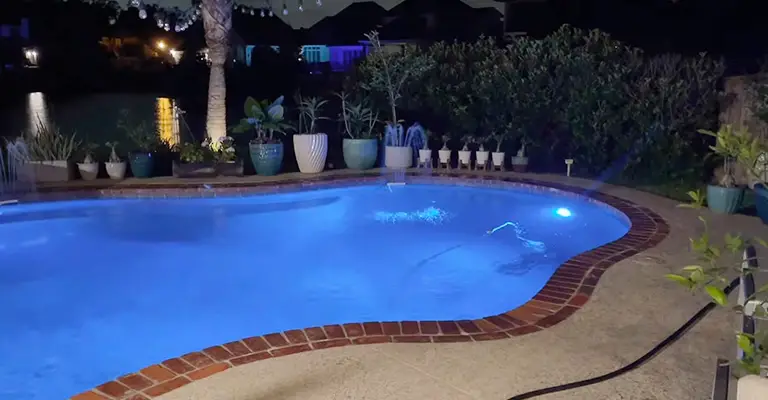As the sun begins to set and the shimmering daylight gradually fades away, the allure of an inground pool can take on a whole new dimension.
The gentle rippling of water, the soothing ambience, and the coolness against your skin form the perfect recipe for relaxation. However, why should the enjoyment be limited to the daylight hours alone?
Imagine transforming your pool into a mesmerizing oasis that comes alive with captivating lights once darkness falls.
Yes, it’s indeed possible to add lights to your inground pool, allowing you to extend the joy and enchantment of your aquatic haven well into the night.
Can Pool Lights Be Added To An Existing Pool?
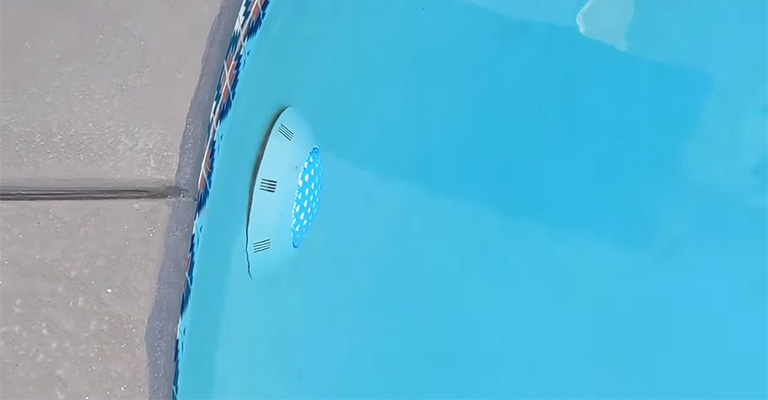
An existing inground pool can install pool lighting, but it can be a significant and cost-intensive project. Installing the lights during the construction of your inground pool saves you the hassle of doing it later.
Why Do I Need Lighting for My Pool?
It is frequently hot and humid during the summer, and sometimes it is even hotter and more humid at night.
A nice dip in the pool is often all you need to cool down. If you have pool lighting in your backyard, you can use your pool any time of year!
When entertaining outside in summer, pool lighting creates a great ambience. It can make you feel more secure if your little ones want to swim after dark if you have pool lights.
You can sit back, relax and enjoy the kids’ nighttime swim while you’re seeing better due to the pool lights!
Inground Pool Lighting Options
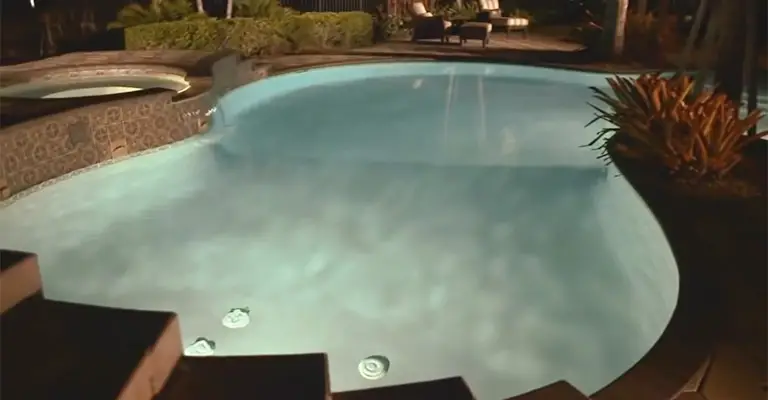
Incandescent Lights:
With an electrical current travelling through a wire, incandescent lighting emits filaments to create light. The filament heats up to produce the bright light associated with these bulbs.
Despite their appearance, the long lifespan of incandescent lights makes them the least affordable option.
Fiber Optic Lights:
Fiber optic pool lights are stored in a dry box on top of the pool patio. During this process, fiber optic cables are utilized to transmit light through a pool wall, which then shines out through the water.
Despite their popularity in the early 2000s, this type of lighting has since lost its popularity due to LED lighting.
Fiber optic lighting has the major disadvantage of being the least bright and being very expensive for the little amount of light it produces.
LED Lights
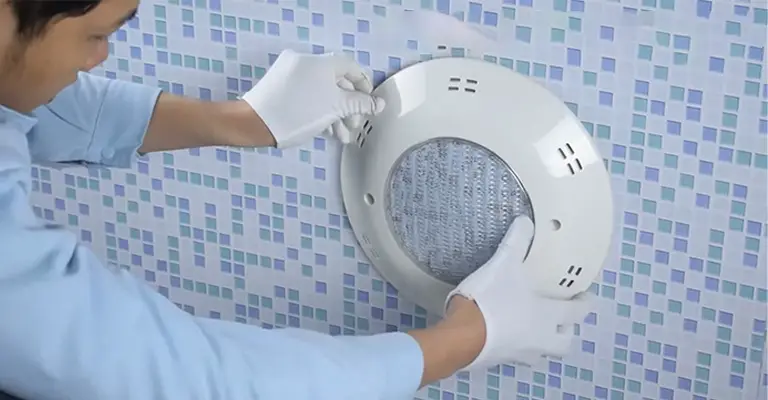
Because LED lights have a long lifespan, they are ideal for pool lighting.
LEDs have a lifetime of around 30,000 hours, which defies fiber optics and incandescent, whose lifespans are 6,000 hours and 5,000 hours, respectively.
Furthermore, LED lights don’t produce heat since they do not contain filaments.
Inground Pool Light Installation Guide
These steps can generally be followed with inground pool lights, though you should always consult your manufacturer’s instructions.
Choose A Light
There is a huge selection of lights on the market, so choosing one that meets your individual needs, taste, and budget may take some time.
There are different types of lighting – such as incandescent, halogen, LED and fibre optic – each with advantages and disadvantages.
Assembly
Assemble the light following the manufacturer’s instructions after you decide what’s best for you. Observe for bubbles after submerging all seals in shallow water to ensure they are watertight.
Power Supply
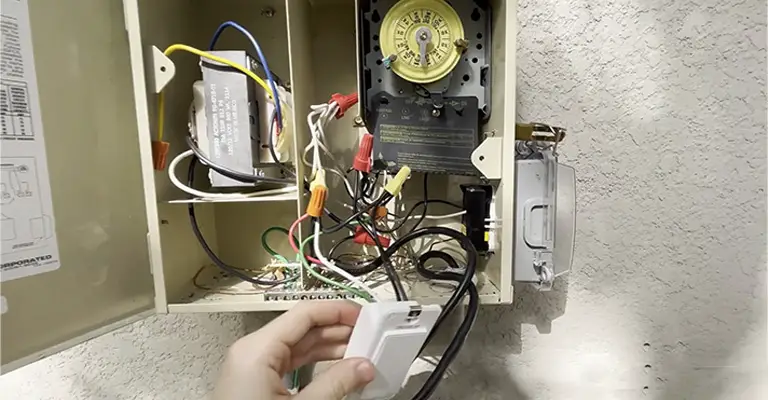
It may be that your option is battery-powered; if so, simply add the batteries, and you’re ready to go. The perfect lighting solution for those seeking an exciting effect or feature lighting.
You must install a power source if you want to light up the pool. You should use a GFCI outlet, and you can mount the light transformer near the outlet.
The other option is to install a waterproof junction box on an existing power line if that is not possible. In the case that you have a limited understanding of electrical principles, it might be wise to consult a licensed electrician.
Installation
Check the functionality of the device before you install it. Once the light is installed according to the manufacturer’s instructions, you can mount it on your pool’s wall.
With a corded light and a hard wall, you will need to remove the trimming, run the cord, and then replace the trimming.
If you have a soft wall, attach the cord to the pool railing according to the manufacturer’s instructions.
What Kind of Maintenance Will My Pool Lights Require?
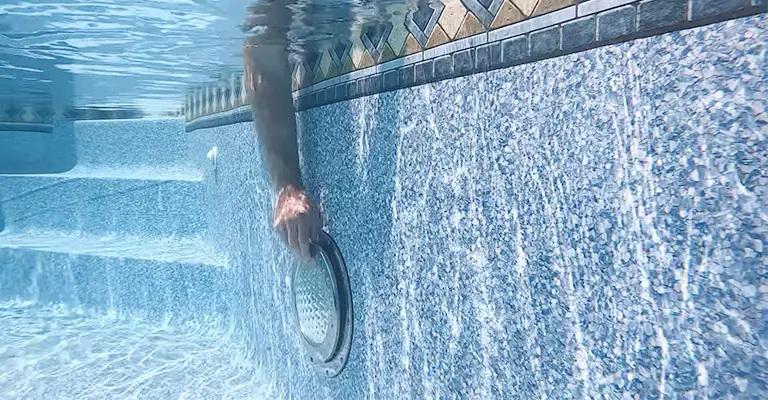
Only replacing the bulbs should be required for pool lighting maintenance. A bulb can usually be switched in five to ten minutes.
It’s fortunate that you should never have to lower the water level to replace a bulb, despite the type of light.
Even though bulbs need maintenance, upkeep shouldn’t be a major concern, given how long the average bulb lasts.
How Much Will It Cost?
Typically, full-size LED pool lights, which are usually installed in vinyl or concrete pools, cost $1,000 to $1,500 to install.
Lighting companies typically charge between $700 and 900 to install smaller LED lights.
For full-size incandescent lights, the price will be between $450 and $650, and fibre optic lights will cost approximately $1,300 to $1,700.
Are They Safe?
Any electrical device placed in water would usually cause concern, and in most cases, it should; however, pool lighting is not one of those situations.
Thanks to some clever lighting, your pool can be safer and more attractive with just a flick of a switch. Using your pool at any time won’t be restricted to daylight hours, so you can enjoy it whenever you want.
If they are installed according to the manufacturer’s specifications and comply with local building codes, pool lights are entirely safe.
Other Ways to Add Pool Lights to Your Swimming Pool
When it’s hot outside, having a swimming pool in your yard is a welcome sight. Even your entire home is likely to be enhanced by your pool.
The respite is perfect for social gatherings day and night, becoming a new oasis perfect for midnight swims.
Nevertheless, lighting is crucial for ensuring safety during evening gatherings. A lavish outdoor pool lighting system will transform your dreary pool parties into memorable events. Safety is the top priority.
Adding pool lights to your pool can be achieved in five ways:
Intimate Lighting of a Fire Pit:
It can get quite cold at night in some parts of the country. You might not be ready to go inside while the party is leaving the pool area. During the party, enjoy a quiet nightcap by the bonfire.
Despite the majority of your guests leaving, the fire will still provide a warm, well-lit spot for relaxation when you want to.
Accent Water Features:
Are there any unique features in your pool, such as a waterfall or a fountain? You can use accent lighting to draw attention to these features while also adding additional lighting to your pool area.
Your waterfall can be illuminated from the bottom for a dancing lights effect. Lights can also be directed toward where the waterfall meets the water in the pool, emphasizing the splashes.
Tiki Torches:
You can add a relaxing island vibe to your outdoor space by lighting up your outdoor space with tiki torches. Tiki torches are important when it comes to aesthetics and capability, but the quality is equally important.
In addition to the fiery lights you’ve become accustomed to, professional tiki torches can also be wired for regular lighting.
This upgraded tiki light installation involves choosing the location of the lights and putting the wiring in place.
Tiki torches can be lit up by simply flicking the switch, or you can fill them with oil and light the wick for a traditional look.
Submersible or Floating LEDs:
One option is to light up your yard, but pool lights don’t need to be outside. LED pool lights are available in floating or submersible models.
This stunning effect will dazzle your guests with multiple colors of lights within the waves. There are a variety of decorative shapes and sizes available for submersible and floating LED pool lights, so you can choose one that suits your mood or décor.
LED Flood Lights:
In addition to the living room and garden, LED flood lights can be used anywhere in your home. It is possible to light up your entire backyard with LEDs. Lighting using LEDs has some advantages over traditional bulbs, such as:
- Installing is easy
- Comparatively lower costs than conventional bulbs or halogen lights
- Traditional bulbs last longer
If you want to use LEDs for your pool, think about what aspects of the yard and pool you would like to illuminate. You should always consult with professional pool lighting experts.
Tips and Tricks
We have put together our favorite tips to ensure your lights will work effectively for years to come.
Make sure the lights are installed so they are easily accessible, with enough cable behind them to facilitate servicing.
Installation should be between 300 and 400mm from the top of the coping – any deeper will be challenging to maintain.
During winter, you should use your pool light for fifteen minutes weekly to remove the moisture inside the cavity and extend the globe’s lifespan.
Government Regulations
Lighting your pool requires the same attention as fencing – especially if the lights are submerged.
There must be a waterproof rating of IPX8 for underwater lights (which means they can be immersed in water continuously). As well, new installations cannot exceed 12V AC or 30V DC.
Whenever possible, it should be water-cooled and never turned on unless totally submerged in water.
Even if your pool has already been there for a number of years, these steps will make installing your own inground pool lighting a breeze!
Read the specifications carefully, choose the lighting, and then get started. If you follow government regulations, you’ll enjoy a healthy, beautiful pool all day and night!
The Bottom Line
If the pool has never had any lighting system installed under the surface, adding a new light requires removing the water and running a wire through the wall to the switch.
This is why we advise you to consider all your options before you begin to build (especially how you will handle lighting in the future). Doing this save time, hassle, and money in the long run.

